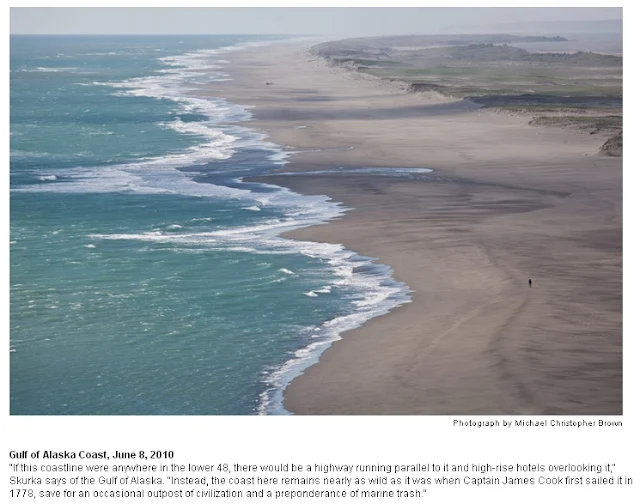MOUNTAIN MAN: Seekonk native’s Alaskan trek featured in National Geographic magazine
Andrew Skurka did dozens of school projects using National Geographic magazines when he was a student in Seekonk schools never imagining that one day he’d be in the esteemed publication. But a decision to abandon a career path as an investment banker and pursue an adventurous life would prove otherwise. This month, Skurka’s 4,700-mile, six-month solo expedition around Alaska and the Canadian Yukon is the subject of a 16-page National Geographic feature.
During the six-month trip, Skurka hiked, rafted and skied his way through a 4,700-mile loop around Alaska and the Canadian Yukon at one point traversing a 650-mile stretch without crossing a road or seeing another human for 24 days.
“The specific appeal of the Alaska-Yukon Expedition was that it was an awesome route through the wildest state in the US,” said Skurka. “My core objective in doing the Alaska-Yukon Expedition was to have a rewarding experience. In that respect, I think I succeeded. I was also very determined to finish the trip, which I think is what pulled me through the most difficult sections.”
The National Geographic article details one of the difficult sections he hit in May, about a third of the way through the trip: “The problem was the rotten snow — crusted chunks that couldn’t support a skier’s weight. In the Alaska Range, Skurka had struggled, sinking deep. He’d tried to gain altitude. Maybe the springtime snow would be colder and firmer higher up. It wasn’t. So Skurka walked. He spent most of one day “postholing,” every step plunging him knee-deep in the snow, and bushwhacking through dense willow and alder brush. He managed a scant 12 miles before darkness fell.”
Skurka started out on the expedition last year on March 14, in Kotzebue, on the northern coast of Alaska and he made his way down the coast. He traveled west to east across the southern portion of Alaska and up through the Canadian Yukon to the last leg of the trip above the Arctic Circle in the summer months. In all, he passed through dozens of mountain ranges and eight national parks.
And at another point in The National Geographic story the author describes the minute details Skurka planned for in advance of his expedition when he picked up a resupply package at a post office in Slana, Alaska that was “filled with everything from the hiking sticks that he would swap for ski poles to precision-portioned bags of dried pasta, potato chips crushed to save space, and carefully weighed M&M’s, along with maps marked with intelligence and instructions gathered and collated months earlier.”
Skurka, who has completed several record-setting long-distance solo expeditions, has logged more than 30,000 miles of hiking, rafting and skiing through wilderness areas including 550 miles through Iceland, 195 miles in the Sierra Mountains, 385 miles in northern Minnesota in the middle of winter and a “sea to sea” 7,778 mile trans-continental adventure from Cape Gaspe, Quebec to Cape Alva, Washington that passed through the northern New England states and across the top of the United States. In 2007, Skurka was named National Geographic’s Adventurer of the Year.
“The Alaska-Yukon Expedition was just the most recent in a series of long-distance outdoor adventures. These trips have tremendous aesthetic and cultural rewards — I’ve seen many amazing places and have encountered some great people along the way. And they are extremely gratifying to finish, as they are — by far and away — the great challenges that I’ve ever taken on,” he said.
Though technically still a resident of Seekonk, the 29-year-old Skurka is based in Boulder, Colo. at the moment, and he spends time traveling around the country giving talks about his trips and holding seminars about the technical aspects of backpacking. He’s also offering a few upcoming guided trips through his website.
His personal experience in attaining goals and overcoming obstacles are the subject of some of the talks he gives to Scout troops and other groups. Now, six months after the trip through Alaska, Skura said he’s still “trying to make sense if it. My current view of it, which seems to be continually evolving, is that it was a six-month period in which I was entirely out of my comfort zone. The nature up there does not permit comfort — it is untamed wilderness. Being out of one’s comfort zone is wearisome, but I’ve found that’s when the most personal growth and learning takes place.”









No comments:
Post a Comment